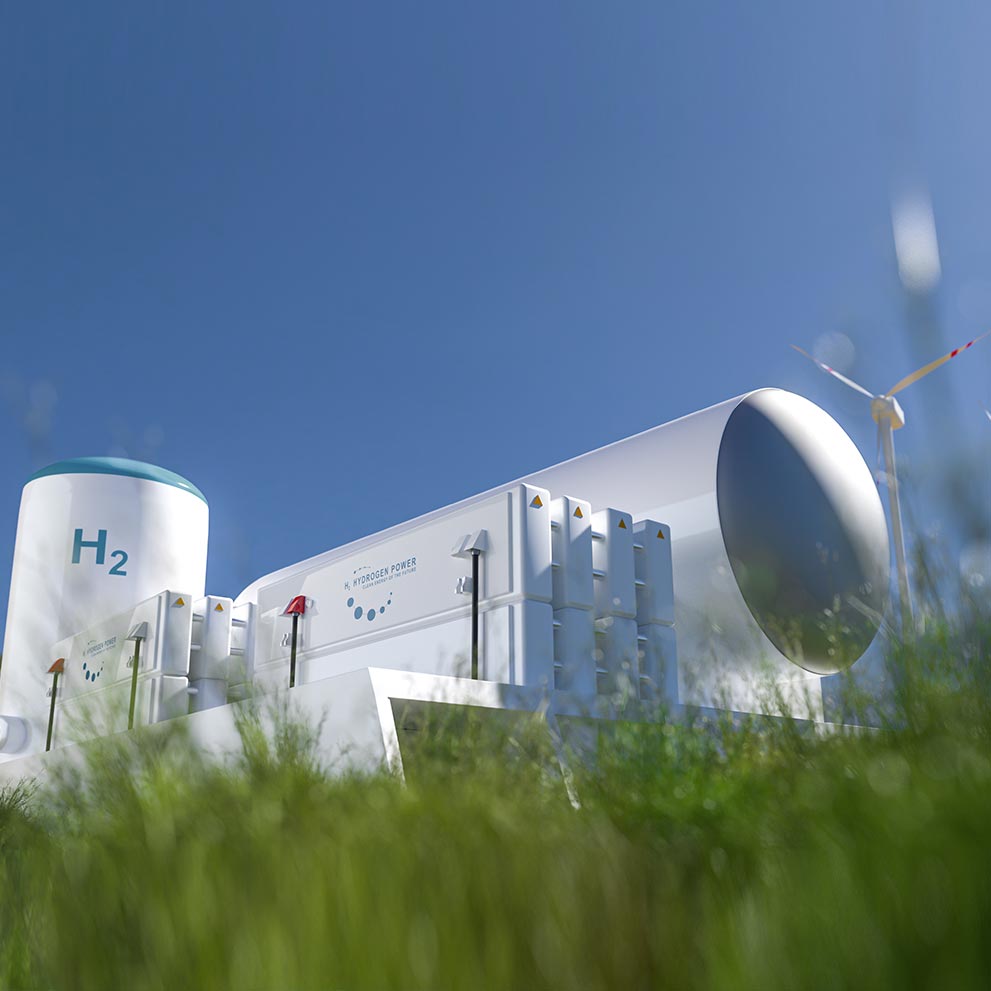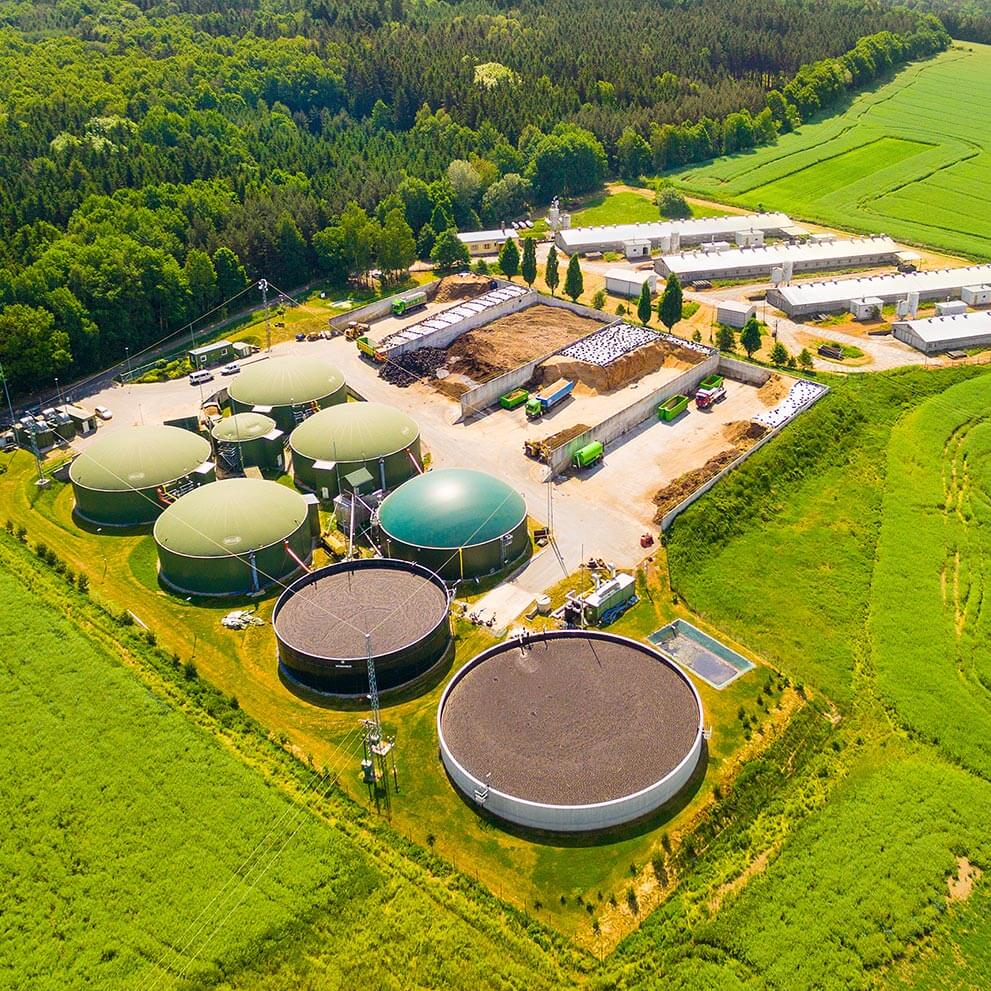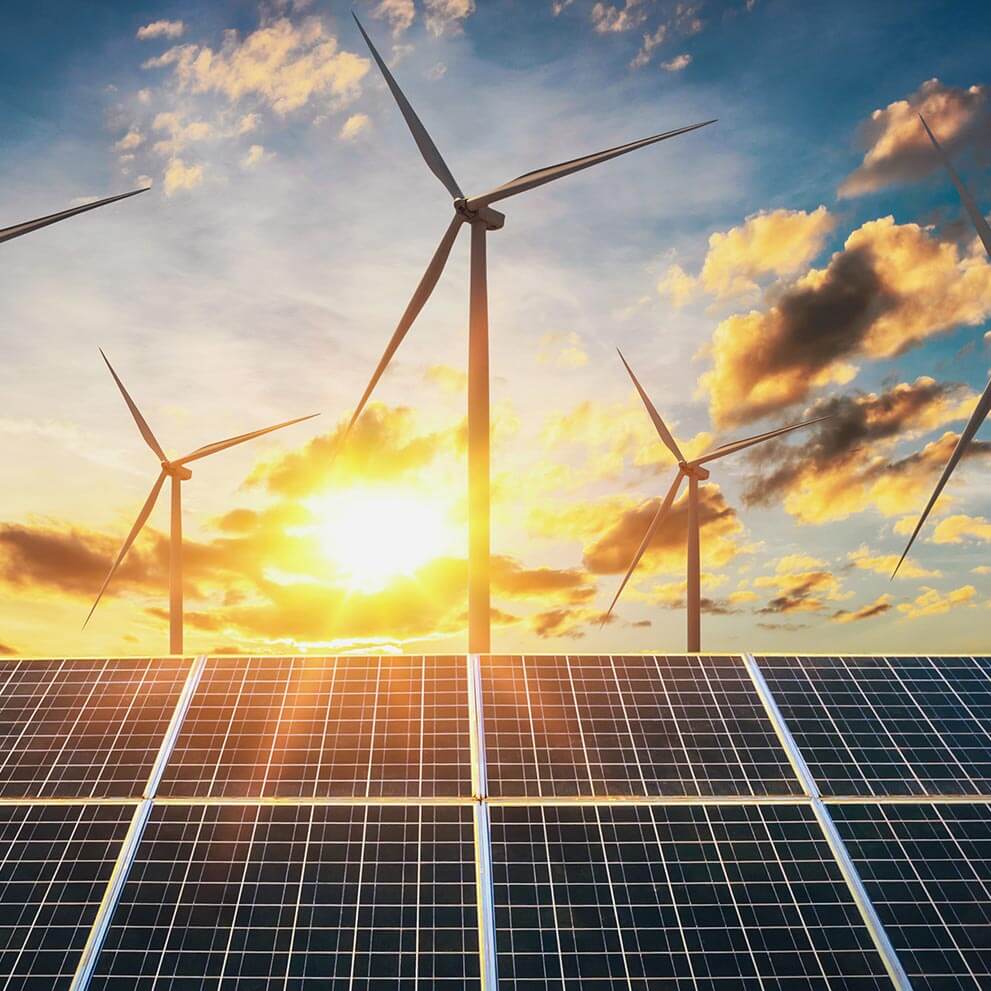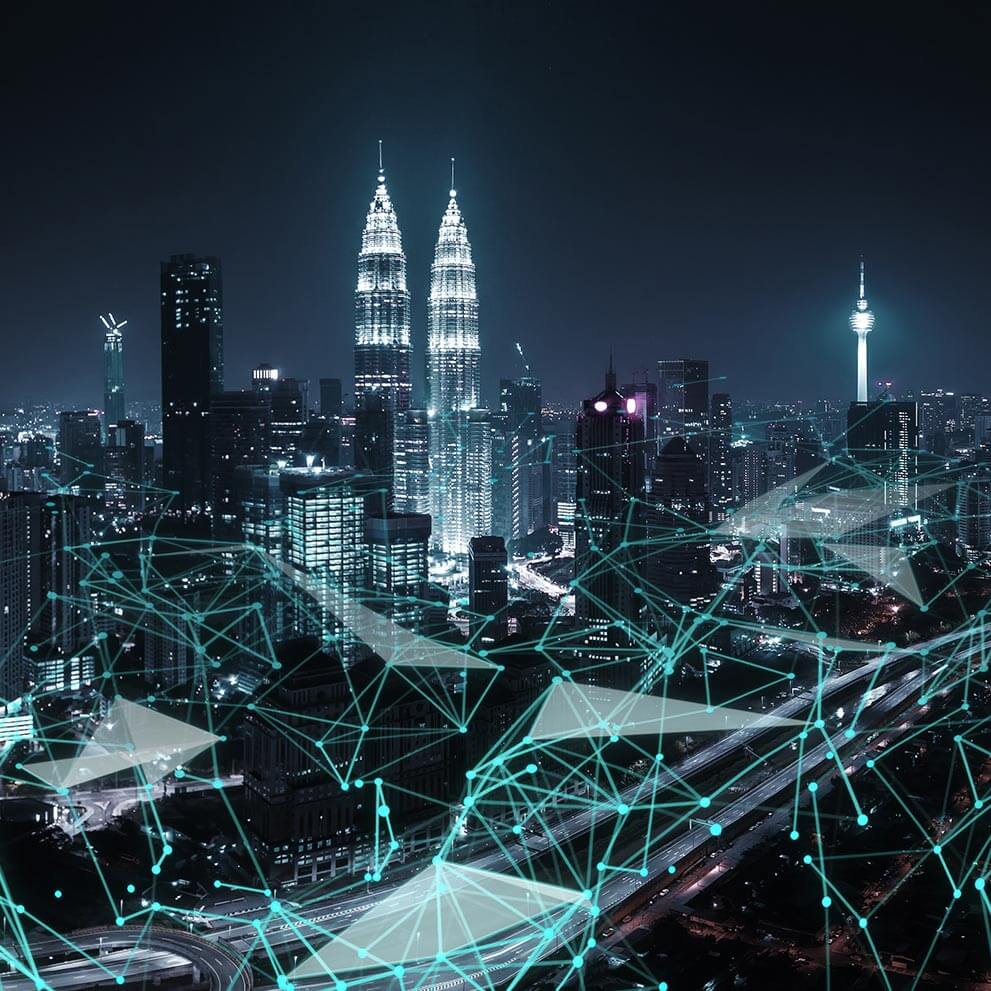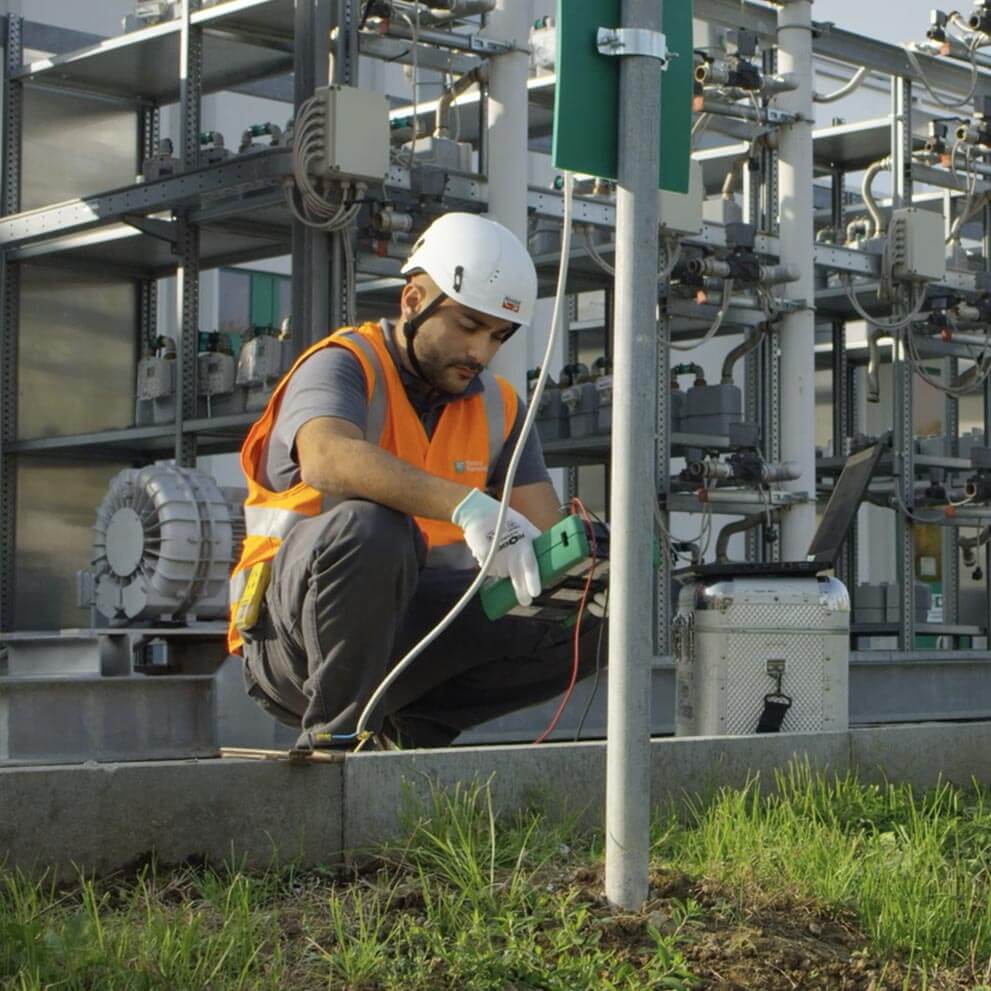Expertise
Unlimited know-how
With more than 80 years of experience and a corporate culture based on continuous improvement, we are constantly looking for new ways forward. A considerable part of our investments is aimed at developing technological solutions that can open new frontiers also in renewable energies at a time of energy transition and can make distribution and transport networks more efficient. At Pietro Fiorentini, the future is now.
Hydrogen combustion does not release carbon dioxide, but rather steam, and it is easier to transport and store than electricity. This makes hydrogen the ideal ally for renewable energy production.
Today, hydrogen can only be injected into the pipeline network and blended with natural gas up to certain percentages: we are commited to creating systems and devices that can overcome this limit.
Expertise in Hydrogen
How hydrogen is produced
Hydrogen can be produced in different ways from different energy sources, taking names that recall the environmental impact of production processes. Hyter, a company of the Pietro Fiorentini Group, has developed a new technology for the production of hydrogen with reduced environmental impact.
PF Hydrogen Journey
Hydrogen is one of the major players in the energy transition and Pietro Fiorentini intends to make its experience available through participation and development of new projects in Italy and abroad, membership in the main tables in the industry and experiments to test the readiness of its devices.
Pietro Fiorentini’s Hydrogen Innovation Lab
Pietro Fiorentini’s hydrogen journey saw the achievement of an important milestone in October 2022 with the inauguration of the hydrogen laboratory, a multifunctional facility at the Arcugnano headquarters capable of producing hydrogen, gas blending and testing device readiness.
Unlike other renewables, biomethane requires limited investment in terms of infrastructure. Moreover, regarding emissions, it is considered to be neutral as it is produced via the digestion of biomass from by-products, industrial processing waste and organic material.
Specific incentives promoted at the European level are making its use economically sustainable, and as a result production and use of this source are being strongly encouraged.
Expertise in Biomethane
Biogas vs Biomethane
Biogas and biomethane are different substances: biogas is a compound with a methane content of between 50 and 70 per cent, while biomethane is a biogas that has undergone a refining process to reach percentages of 97 per cent or more methane, ready to be injected into the transport and distribution grids.
Biomethane: the advantages of this gas
Biomethane is a valuable ally in the energy transition process: it is a sustainable gas produced from the digestion of biomass, a raw material considered as waste that starts a virtuous circle in which the final by-product also finds a new use.
PF experience in biomethane
Pietro Fiorentini realises integrated and customised solutions along the entire biomethane chain, including the treatment of raw biogas, the feeding of biomethane into the grid, methane and CO2 liquefaction. Pietro Fiorentini is a member of the Board of Directors of the Italian Biogas Consortium and is founding member of the Biomethane Industrial Partnership.
Managing ‘green electrons’ over time and space is important to obtain as much energy as possible when renewable sources such as the sun and the wind are available.
Power-to-gas, a technology that transforms surplus electricity into gas molecules that can be transported over long distances at low cost and can offer the possibility to seasonally store renewable energy, is the answer.
Expertise in Power-to-gas
From electricity to green gas
Power-to-gas technology exploits the phenomenon of electrolysis: excess renewable electric energy from wind farms, photovoltaic fields and electrical infrastructure congestion is used to break the bonds of the water molecules and produce hydrogen, which can be upgraded on site or transported to other places.
Pietro Fiorentini’s complete power-to-gas solutions
80 years of experience in processing natural gas combined with our commitment to the process of decarbonisation has driven us to develop complete solutions ranging from power-to-methane, to convert electricity into green gas compatible with the relevant infrastructure, to biological methanation plants.
Successful projects
Pietro Fiorentini’s commitment to the development of power-to-gas solutions is reflected in cutting-edge projects in Italy and Europe, leading the company to establish itself as a reliable technology partner in the field of energy transition.
Smart Grids, which integrate different types of energy and make autonomous decisions to optimise energy distribution, are an ambitious project that will, in the very near future, manage energy through networks capable of instantaneously regulating multiple, discontinuous and bidirectional flows.
Expertise in Smart gas grids
Decarbonisation, decentralisation and digitalisation
Smart Grids can greatly contribute to achieving the European objectives of the Green Deal. Smart Grids implementation allows to optimise flows, transforming the final consumer in producer of energy, and maximise the safety and eliminating leakage and waste.
Sustainable, digitalised grids for gas distribution
Distributing natural gas through sustainable, smart grids means designing systems which feature flexibility in managing flows, the ability to maintain balance within decentralised grids with bidirectional flows and resilience of the systems themselves.
Pietro Fiorentini’s systemic approach
Pietro Fiorentini’s systemic approach aims to pursue simple connections that interact with each other to create resilient systems. The achievement of the maximum level of Smart Gas Grids implementation is to achieve full integration between gas distribution networks.
When iron and steel come into contact with an electrolyte, such as soil, a phenomenon called electrolytic corrosion occurs in any infrastructure made of metal.
Electrolytic corrosion cannot be completely eliminated, but specific measures can be taken in the design and construction phases to significantly reduce its effects.
Expertise in Cathodic protection
Passive and active cathodic protection
Depending on the technology used, it is possible to implement passive cathodic protection with coatings and inhibitors, or active cathodic protection using sacrificial anodes or impressed current to counteract faults and gaps in the coating caused during installation or by deterioration.
Regulatory and operational aspects for the cathodic protection
The quality of the cathodic protection service is determined in different ways. There are international standards that require the use of the electric potential between the metal structure and the ground as a criterion for defining its protection.
Pietro Fiorentini’s experience in cathodic protection
Pietro Fiorentini started developing and creating cathodic protection monitoring systems in 2016. Service2Business is the software able to interface with devices for the monitoring and remote control of cathodic protection systems.
Water is a primary resource, a fundamental need for life. Good water governance is a strategic responsibility from every point of view: institutional, environmental, economic.
The goal is to move towards process automation through the digitalisation of water networks, thus achieving a better optimisation of resources, investments, and data management, with a business advantage for companies but also a social advantage for the communities.
Expertise in Water
Digitalising the water cycle
Within the water cycle coexist a wide number of complex systems, requiring thousands of control points and simple installations of valves or sensors, characterised by a limited but important number of signals. The application of IoT technology enables the strategic management of the water cycle.
Ultrasonic smart water meters
Ultrasonic smart water meters measure the volume of water used by final users and are also used to determine flow through a specific portion of the cycle. Water metering is a component of public water resource management aimed at monitoring and eventually reducing water consumption.
Solutions for water cycle control and monitoring
Water cycle control technologies, data management solutions to support distribution companies in the processes involved in remote metering and remote management, on-field workforce management through satellite tracking: these are some of the solutions we can provide.
Surface treatment is a critical step in preserving the integrity and longevity of structures and equipment, especially when they are exposed to various environmental conditions.
